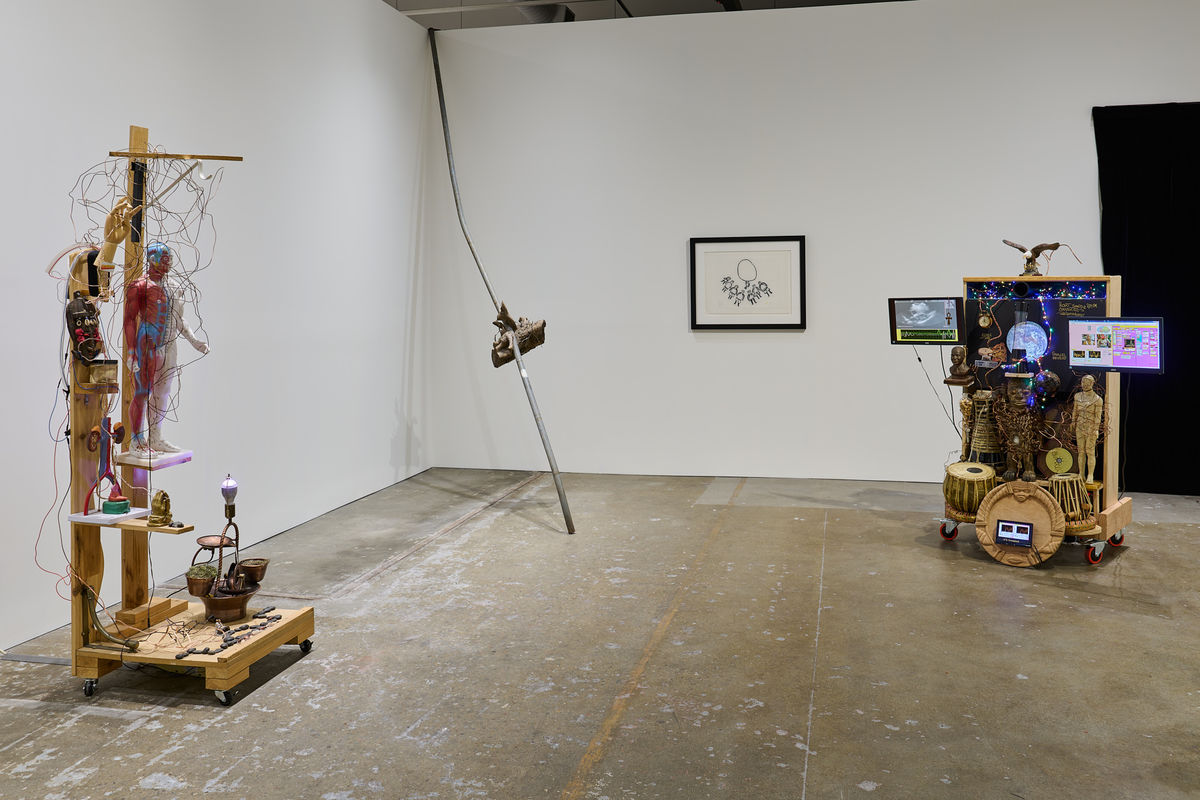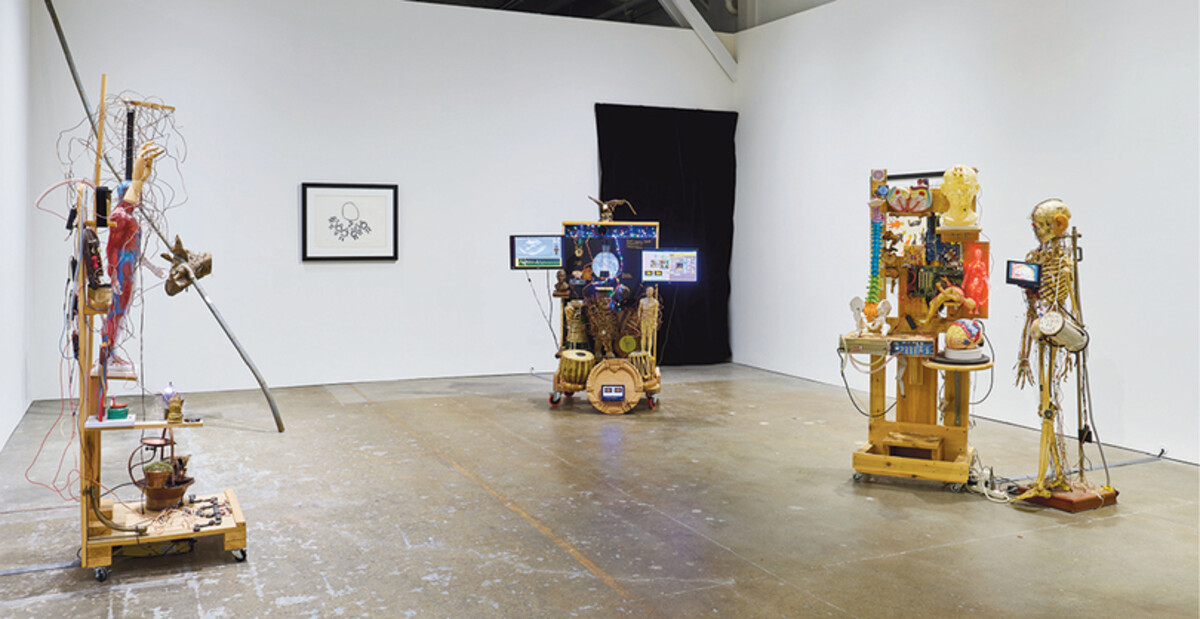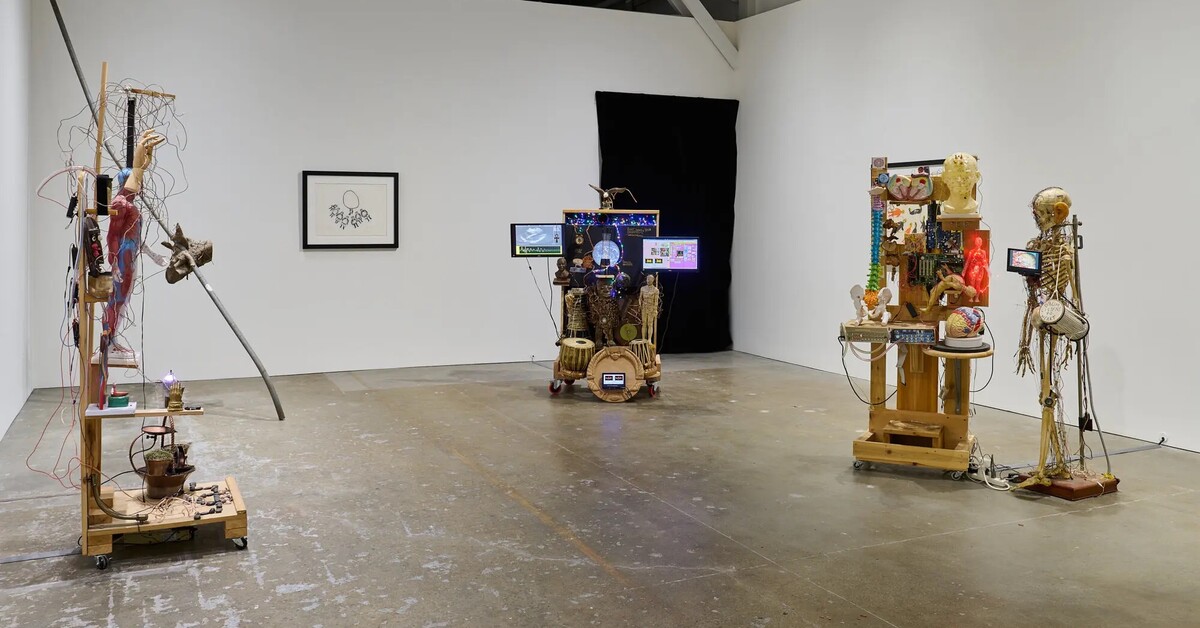
Harold Mendez, but I sound better since you cut my throat, 2016, Reclaimed galvanized steel, wood, chain link fence,; Dimensions Variable
Let’s begin with the drum, but move away from it, bit by bit, until all that is left is the feeling of its presence in the room.
Because percussion reaches far beyond the drum. It relates to music and rhythm, sure, but in a more general sense, the percussive speaks to a wide range of aesthetic, expressive, and political forms.
To percuss means to strike or to hit, but it also means to move or to groove. It means to interrupt or to break. To worship and to heal. To gather and to accompany. To control but also to protest and demand freedom from forms of control. To beat at the speed of the heart.

Installation view of “Drum Listens to Hear”; Courtesy of The Wattis Institute
Drum Listens to Heart weaves different forms of percussion together — physical and socio-political, literal and metaphorical — and juxtaposes instances of impact and vibration with forms of control, emancipation, and community-building. It offers a framework and a vocabulary that binds art and politics to each other in percussive ways.
As a physical exhibition, Drum Listens to Heart takes on an unusual but relevant form: it is divided into three successive and separate parts that come together to form the exhibition as a whole.
These three sections form the exhibition’s polyrhythm, its pattern of beats and breaks, its moments of intensity and moments of rest — its music. Visitors only ever encounter a fragment of the exhibition as its layers build up gradually, over time. Like a heartbeat, the exhibition stays alive by always staying in motion.
- Anthony Huberman
Francesca Wilmott on “Drum Listens to Heart”
Artforum
Jun 1, 2023
Jun 1, 2023
‘Drum Listens to Heart’: Images, Words and Sculptures, Bound by a Beat
The New York Times
Nov 30, 2022
Nov 30, 2022


